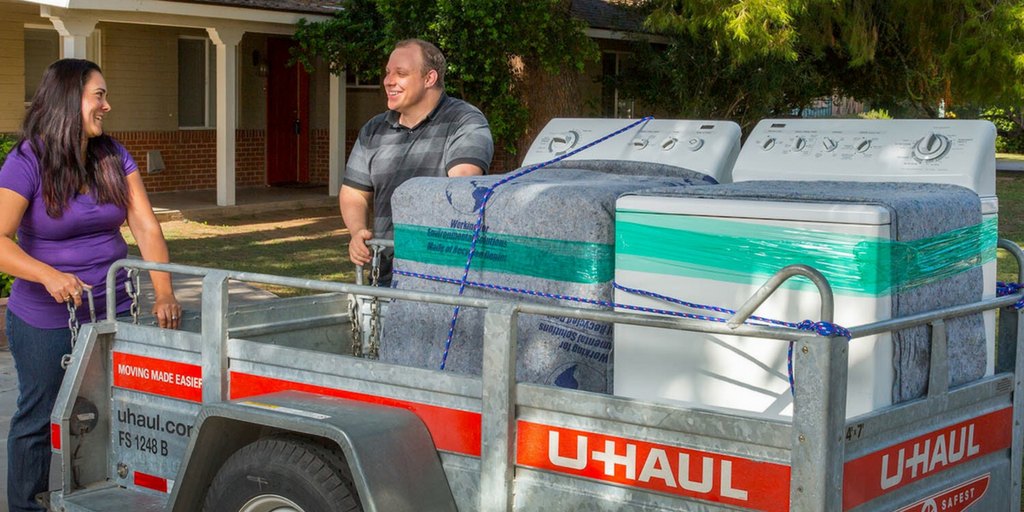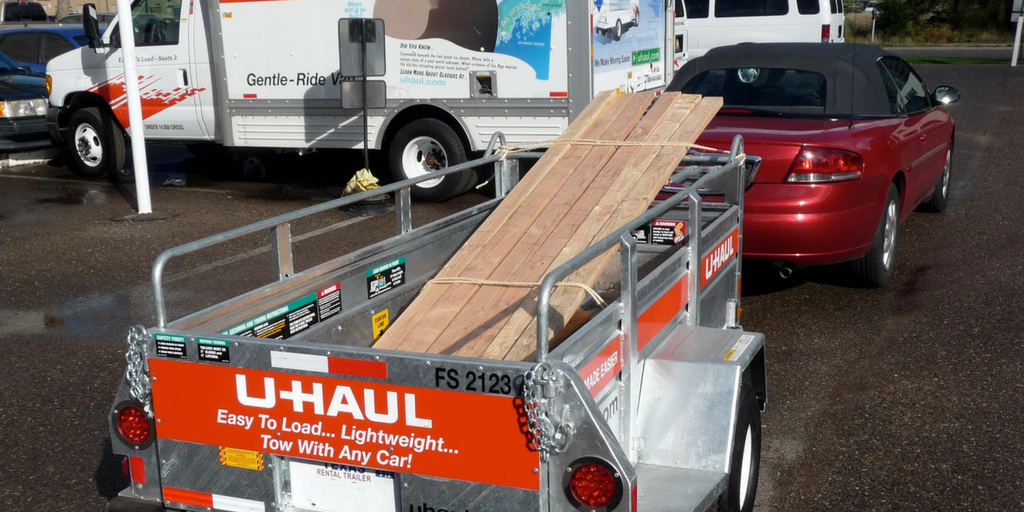Trailers are a versatile and cost-effective rental option. Whether you are moving to your first apartment, antique shopping or starting a home renovation project, an important step in trailer safety is to make sure you secure your load properly. Taking this extra step will not only protect your belongings, but it will also keep you in compliance with state and province laws that require cargo securement. These laws are designed to keep you and others on the road safe from dangerous road debris.

Importance of Securing Your Load
The 60/40 Rule
Securing your cargo in sections as you load helps maintain the important distribution of weight in your trailer. The correct weight distribution for all U-Haul trailers is to put 60% of the cargo weight in the front of the trailer, and 40% in the back. Securing your load in a place like this is critical in preventing shifting of the load. If your cargo shifts to the rear, the trailer could experience dangerous swaying or whipping.
It’s the Law
Unsecured loads are now generally recognized as a danger to other drivers. We all have seen unusual objects on the highway: a mattress, couch cushion, cooler, ladder. Those road hazards used to be unsecured cargo. As a responsible driver, you would never want to endanger surrounding drivers on the road. Throughout the U.S. and Canada, there are both cargo securement and road debris laws. Penalties vary from hefty fines to possible prison time if others are injured as a result of your unsecured load/accidental ejection of goods from your trailer.
Protecting your Valuable Belongings
To protect your valuable items, it’s important to consider the best and safest way to transport them. Regardless of your choice in type of trailer: open or closed, if you don’t secure your load, you run the risk of your belongings shifting and breaking or possibly being blown out and lost.
Some extra tip for keeping your goods secured and damage-free are to:
- Avoid overloading
- Position heavy items at the bottom and light items on top
- Cover items with a tarp
- Use rental furniture pads or quilted pad to protect, cushion and cover items
- Use plastic wrap to secure drawers closed

How to Secure Your Load
In a utility trailer, you will secure your ties to the D-rings or rails located within the trailer. In a cargo trailer, you will secure your ties to the rub rails located on the sides of the trailer and also to D-rings where provided.
- Use the type of tie-down you find appropriate to secure your load in sections to keep your cargo in place during transit.
- If you aren’t sure how many tie downs to use, always err on the side of caution and use more. These tie downs should keep your load from shifting during the move.
Items to Use to Secure Your Load
Here are some of the common types of tie-downs that you can use for securement and maximum stability.
- Rope – Essential for securing items to prevent movement and/or damage while your items are in the trailer.
- Ratchet tie downs – Nylon weave webbing used for tying down loads while transporting to avoid shifting or movement.
- Tarps – A lightweight, waterproof, mildew and crack-resistant blanket-like material that protects and contains cargo while hauling.
- Cargo nets – A net with hooks on each end that are placed on top of the load, for added stability. You can find these in different styles to best fit the needs of your load.
Plan ahead and check your supplies to make sure they are still in good condition. Ropes and nylon weave webbings can get old and frayed, which could break or get loose in the middle of your move.
Now that you’ve effectively secured your load, you’re ready to move your items. For more instructions and tips, be sure to visit our YouTube channel.



